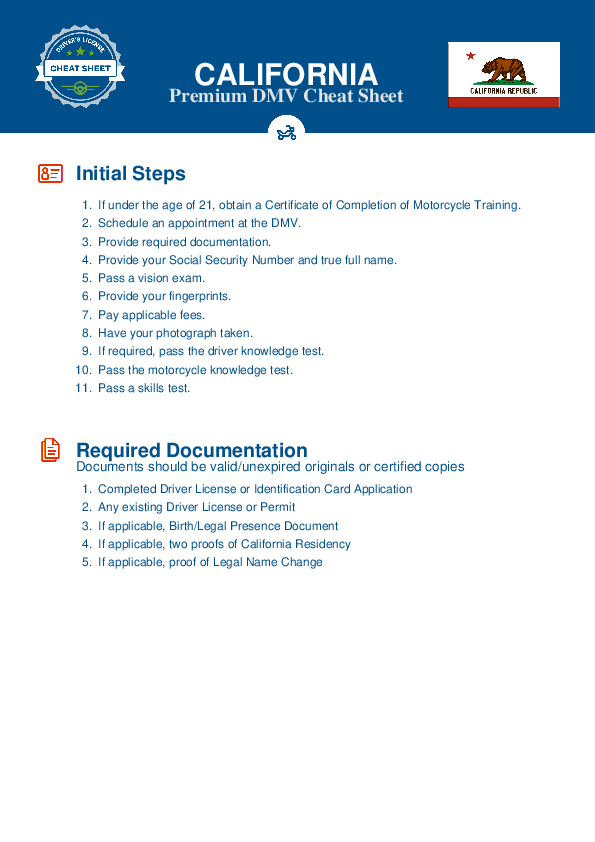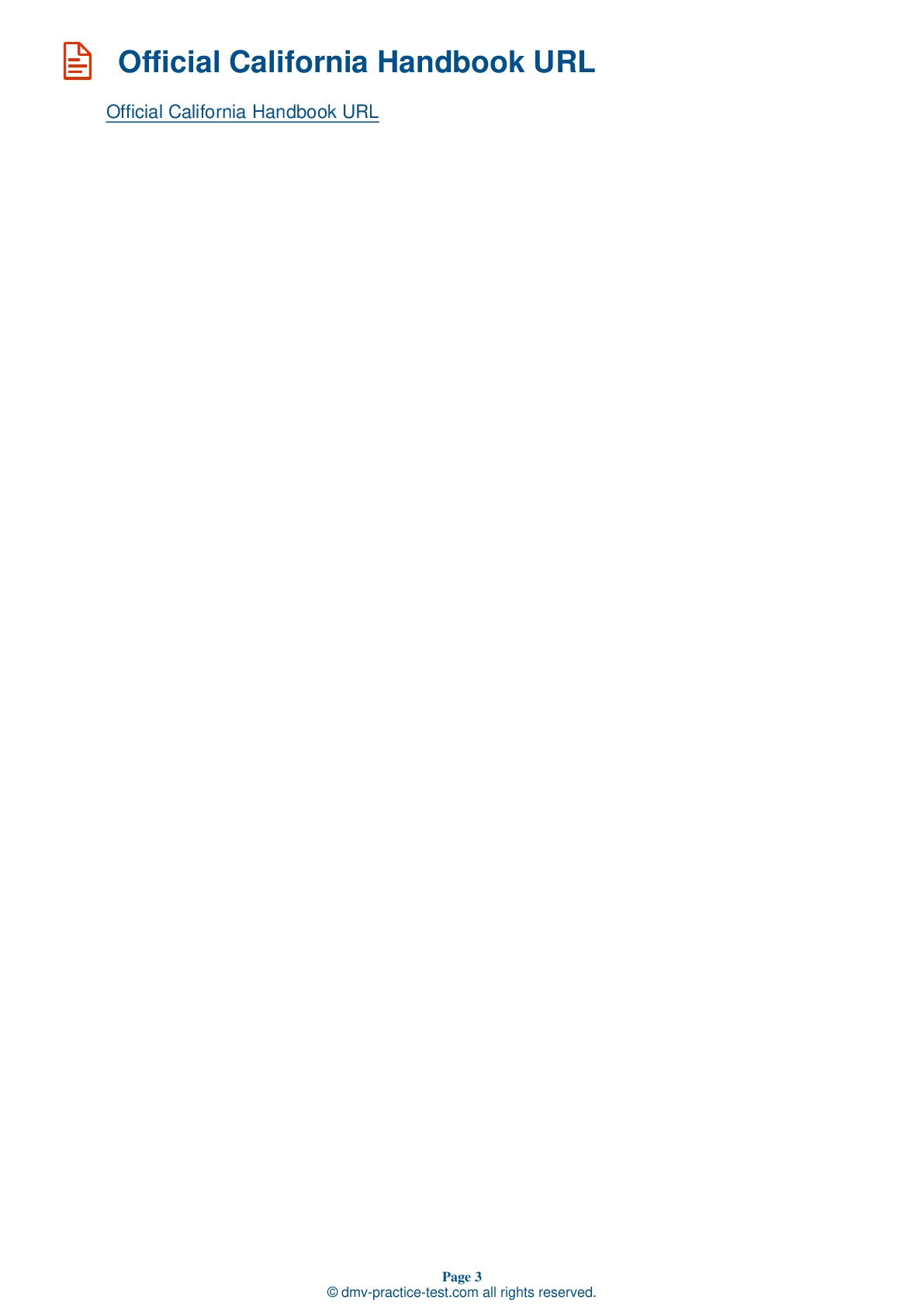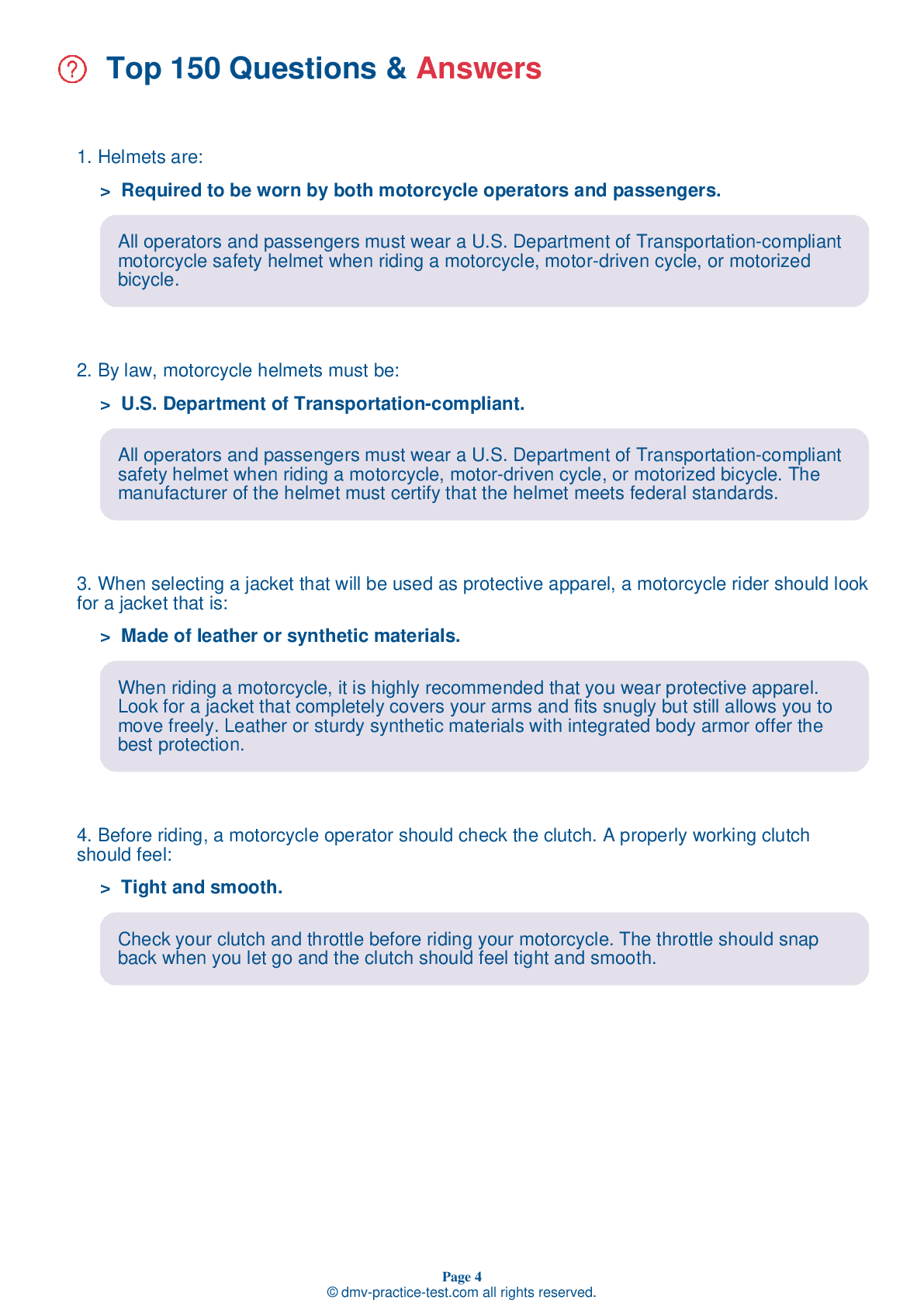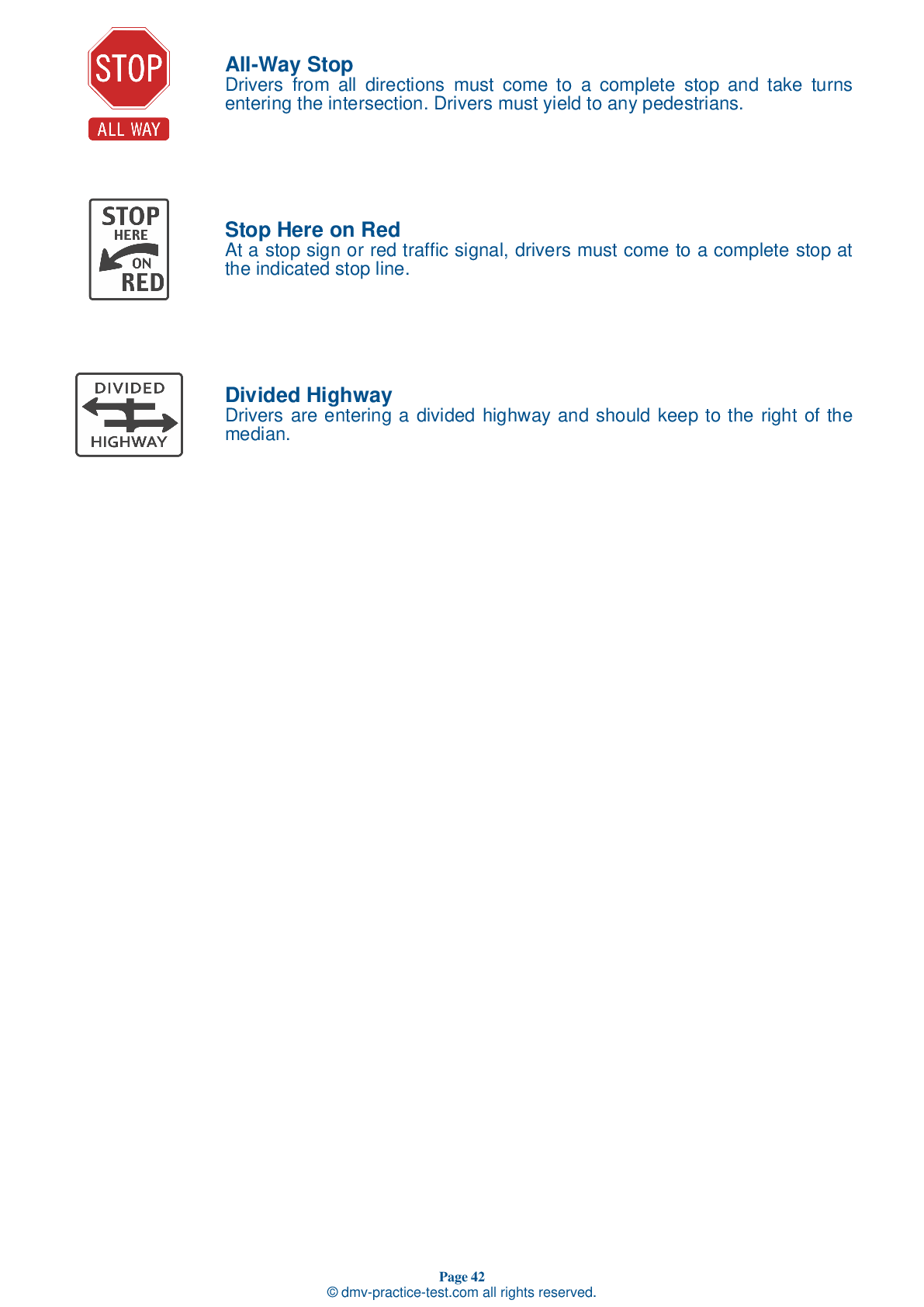Motorcycle Test | License CA 2025 | FREE Online Practice! #6 Page 2 of 4
Take this FREE motorcycle test (license in CA 2025) to check your knowledge of the road rules. To improve your results, download a motorcycle handbook online, study theory, and practice for free on our website. Still worried about how to get a motorcycle license in California in 2025? Check our website for more sample tests, train as much as possible, and boost your grades!
9 . By law, motorcycle helmets must be:
All operators and passengers must wear a U.S. Department of Transportation-compliant safety helmet when riding a motorcycle, motor-driven cycle, or motorized bicycle. The manufacturer of the helmet must certify that the helmet meets federal standards.
10 . As a rider, you can lessen your chances of being involved in an accident by:
To reduce the risk of a collision, be sure to make yourself visible, clearly communicate your intentions, maintain an adequate space cushion, search your path of travel, and identify and separate hazards. Always be prepared to react to any hazard that could arise.
11 . You may wear earphones in both ears:
To prevent hearing loss caused by exposure to wind and engine noise, you may choose to use ear protection. You may not wear headset coverings, earplugs, or earphones in both ears unless they are specifically designed to reduce harmful noise levels. The headset coverings, earplugs, or earphones must not inhibit the wearer's ability to hear a siren or horn from an emergency vehicle or other motor vehicle.
12 . When riding a motorcycle, your feet should be:
When riding, your feet should be kept firmly on your motorcycle's footrests for balance. Your toes should not be pointed downward, as this may cause them to get caught between the road and the footrests.
13 . Hearing protection is:
Long-term exposure to wind and engine noise can damage your hearing, even if you wear a helmet. It is a good idea to use hearing protection every time you ride to help prevent hearing damage.
14 . How far in advance should a motorcyclist signal a turn?
You should signal a left or right turn 100 feet before beginning the turn. This should give surrounding operators time to safely react to your intentions.
15 . This sign means:
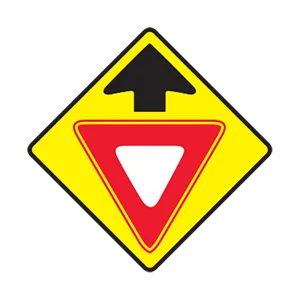
This sign indicates that there is a yield sign ahead. You should begin to slow down when you see this warning sign.
16 . When being passed, moving to the part of your lane that is farthest from the passing vehicle:
When being passed, it is not advisable to move to the part of your lane that is farthest from the passing vehicle. Doing so may prompt the passing driver to move back into your lane too early.
See the exact questions that will be on the 2025 California DMV exam.
99.2% of people who use the cheat sheet pass the FIRST TIME
Jeneen was tired of paying $5/gallon. She got herself a scooter that required the motorcycle license. She studyed the motorcycle test cheat sheet and passed her test the next day!
Christopher tells us how he knew nothing prior to obtaining the motorcycle study guide, and he only got one question wrong because he clicked on the wrong answer by mistake.
